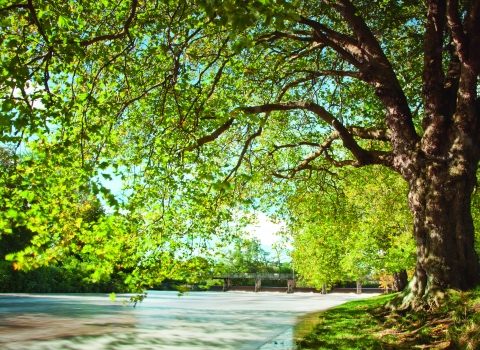Bigger, better, more joined up
Our reserves provide special habitats which are vital refuges for a wide range of wildlife, but we know that it will not be possible to reverse the declines of wildlife by protecting these sites alone. Natural habitats have been lost on an unprecedented scale and we now have smaller, isolated, yet wildlife rich pockets of land that are surrounded by land that is inhospitable for many plants and animals. Common and rare species are now in decline as they cannot travel freely to feed and breed. We must reverse this - and quickly.
Somerset's wilder project areas
Each of these wilder project areas cover a large area of land: a naturally functioning landscape often encompassing several of our nature reserves and other important wildlife areas. Each Landscape consists of:
Core areas of high quality wildlife habitat
Often these will be protected areas, nature reserves, Sites of Special Scientific Interest (SSSIs) etc. These are the vital sanctuaries from which wildlife will be able to re-emerge into the wider landscape once it is restored.
Connections between core areas
Continuous corridors of suitable habitat, such as river valleys or diverse hedgerows, act as ‘wildlife highways’ allowing species to travel through areas disturbed by human influence as they disperse through the landscape to find suitable living conditions – this is even more important in the face of climate change. Habitats can also be connected by a series of stepping stones, rather than a large swath of continuous habitat. Stepping stones are smaller, unconnected natural areas, pockets of protected land that act as stop-off points for wildlife on the move – for example a series of copses in open grassland.
Permeability across the whole landscape
Land between the core areas and connecting habitats needs be more accessible to wildlife. It may not all be pristine habitat but we can make changes to the way that land is managed so that it is easier for wildlife to move through and re-colonise the landscape.
It is also important that we manage the wider countryside more sustainably so that we can continue to benefit from the essential ecosystem services provided by the natural environment, such as clean air and water, healthy soils, food and flood management.
Nature Recovery Networks join dots. They connect our remaining wildlife-rich sites in a certain area to create a dynamic, robust and naturally functioning large-scale landscape for the benefit of wildlife.
Collective impact
We work with farmers, landholders and the community to provide wildlife-friendly advice in terms of connecting green spaces for the benefit of wildlife. We also work closely with local authorities to help influence the plans and policies that either help us to promote a Living Landscape, or could prevent it. For example, flood and water level management issues are likely to become more acute on the Somerset Levels and on the coast, as climate change worsens and our Living Landscapes approach provides a geographical focus to this work.





